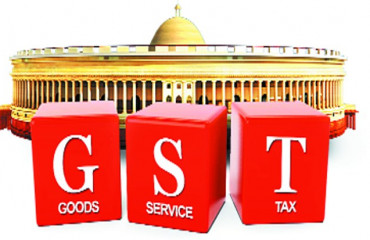
When the Goods and Services Tax (GST) Council convenes for its 54th meeting on Monday, one agenda item likely to resurface is the tax slab on health and life insurance. While the Council has previously discussed this issue, it has gained renewed attention recently. The Opposition has intensified its demands, and a senior minister, Nitin Gadkari, highlighted the issue in a letter to the finance minister in July.
When the Goods and Services Tax (GST) Council convenes for its 54th meeting on Monday, one agenda item likely to resurface is the tax slab on health and life insurance. While the Council has previously discussed this issue, it has gained renewed attention recently. The Opposition has intensified its demands, and a senior minister, Nitin Gadkari, highlighted the issue in a letter to the finance minister in July.
Currently, premiums on health insurance policies attract an 18% GST rate, the second-highest tax slab. Prior to the GST regime, the service tax rate on health and life insurance was 15%, which included a basic service tax of 14% and additional Swachh Bharat and Krishi Kalyan cesses of 0.5% each. Over the last three years, premium payments have brought in over ₹24,500 crore in GST revenue for the Centre, according to finance ministry data.
Read this | Heat, floods and diseases: Will your health insurance premiums rise?
These significant collections have come under public scrutiny, especially after the pandemic, as health insurance premiums have surged due to high medical inflation and the rising cost of private healthcare. Health inflation has consistently outpaced core inflation for much of the past decade, with the gap widening in recent years.
In India, two-thirds of hospitals are operated by private entities, a sector with limited regulatory oversight on pricing. This situation leaves the public increasingly dependent on insurance to cover catastrophic healthcare expenses.
"The cost of seeking care has gone up since covid as hospitals have increased their charges. This has led to a rise in overall premiums as well, as the cost burden falls on the insurance company," said Hiten Kothari, chief underwriting officer and chief actuary at HDFC ERGO General Insurance.
Revenue generation vs public health
Premiums for health insurance plans with a ₹10-lakh sum assured have risen by 10% to 18% (for a 30-year-old male resident in a metro) over the past two years, according to an analysis by insurance research platform Beshak.org, shared with Mint. A significant uptick was observed in the past six months in particular, noted Aayush Dubey, research head at Beshak.org.
As the government's revenue generation efforts increasingly clash with public health considerations, experts are questioning the rationale behind maintaining the 18% GST rate.
"GST collections have been a cash cow for the government. But from a public health perspective, the high GST rate on health cover is a problematic proposition as the government has committed to achieving universal health coverage (UHC) that calls for making health services more accessible," said Soumitra Ghosh, health economist and associate professor at the Tata Institute of Social Sciences. (India has committed to achieve the sustainable development goal of UHC for all by 2030.)
"Our public health sector remains underfunded. Any government regulation, therefore, should aim to make the private health insurance market affordable, rather than making it more expensive through additional taxes," he added.
Mampi Bose, assistant professor at Azim Premji University, pointed out that a lion's share of patients' medical expenses goes toward drugs and medicines during outpatient care, which is not insured. "Therefore, paying more for purchasing policies to protect oneself only against a particular type of risk (primarily hospitalization) is not justified and the burden would fall heavily on the middle-income population of the country," she said.
Medicines account for around 29% of out-of-pocket expenses among inpatients and 60% among outpatients in India, according to a 2022 study led by Mayanka Ambade of the International Institute for Population Sciences, published in JAMA Network.
Second-order effects?
India's per capita spending on insurance premiums, or "insurance density," remains among the lowest globally, indicating significant potential for market penetration. However, the number of people joining the insurance system has seen a stark rise as they seek financial protection against unforeseen contingencies. The share of India's population covered under health insurance (excluding accident- and travel-related health cover and life cover) rose to approximately 39% in 2022-23 from 17% in 2013-14, according to a Mint analysis of data from the Insurance Regulatory and Development Authority of India.
Can a higher tax rate disincentivize people from purchasing health cover? While insurers haven't observed significant changes in buying patterns, they acknowledge that it could have a discouraging impact. The Standing Committee on Finance, in a February recommendation, noted that "the high rate of GST acts as a deterrent to getting insurance policies."
"Individuals don't receive any benefits from the GST they pay, unlike companies that can claim an input tax credit or other advantages, and so a high GST rate can be discouraging. They can perceive it as an additional tax burden on them," Kothari said. Ghosh adds that there is a risk of people slowly going for "inadequate cover".
The path forward: Exemption or a cut?
Public health experts advocate for making health insurance "tax-free" or bringing it under zero-rating GST, with the inclusion of ambulatory care, to genuinely pass on benefits to the people. However, with substantial revenue at stake for the government, will the GST Council blink?
